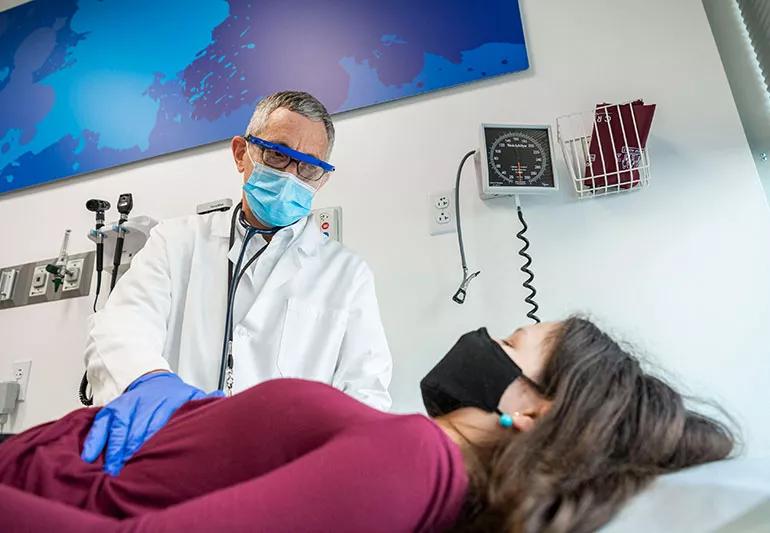The short answer from a primary care specialist

Q: I’m looking for a primary care doctor. What’s the difference between an internist and a family physician?
Advertisement
Cleveland Clinic is a non-profit academic medical center. Advertising on our site helps support our mission. We do not endorse non-Cleveland Clinic products or services. Policy
A: Internists are specialty-trained to treat adults from 18 years old through the geriatric years. They have intensive and comprehensive training in all aspects of adult medical care. Internists specialize in primary care screening and in treating common adult problems, such as diabetes and hypertension, as well as in treating patients with a complex combination of conditions.
Family medicine doctors are specialty-trained to care for people across the lifespan, from birth through the geriatric years. Family medicine doctors have formal training in pediatrics, adult medicine, obstetrics and gynecology, mental health and more. This broad training equips them to deal with a wide range of health problems for the entire family, with a focus on wellness, disease prevention and chronic disease management.
— Family medicine physician Garrett Kirkpatrick, DO
Advertisement
Learn more about our editorial process.
Advertisement

Your first point of health contact

If the area is bleeding a lot or the wound is near your face or genitals, you likely need a specialist’s care

Lots of things can activate the herpes simplex virus, from the common cold and cold weather to cracked skin and cosmetic procedures

Honey can help make a sore throat more bearable by tamping down inflammation and coating your throat

Internists see people 18 and over, while family medicine physicians can treat people of all ages — but from there, they have more similarities than differences

A combination of rest, fluids and over-the-counter medications can help you feel better fast

Changing how you breathe, gargling water and distracting yourself are all common ways to stop your diaphragm from spasming

CTs and MRIs use different technologies to show different things — neither is necessarily ‘better’ than the other

Babies can get congested easily, but you can calm their cough by keeping them hydrated, using nasal drops and running a humidifier

Weight loss may cause loose, sagging skin and muscle loss to your rear

Several conditions, like vitiligo and fungal infection, can cause a loss of pigmentation, leading to white spots or patches on your skin